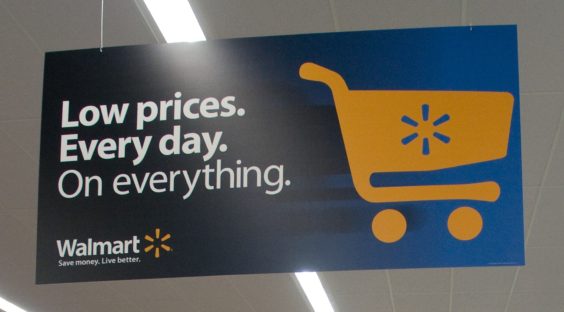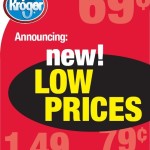
If everyone’s prices are low, are anyone’s prices really low? While you ponder that, consider this recent prediction from the retail consultant AMG Strategic Advisors: within three years, the vast majority of retailers will largely ditch sales and promotions in favor of everyday low pricing.
Super-savers accustomed to collecting coupons and waiting for sales may shudder at the thought; Walmart shoppers accustomed to buying whatever they want, whenever they want it, may be pleased to learn they can get good deals without waiting for sales at other stores as well. Either way, it’s a bold prediction that, if proven true, could lead to a big change in the way people shop.
“It is expected that nearly 75% of retailers will be either EDLP (everyday low pricing) or some form of hybrid EDLP/High-Low format within three years,” the report reads, though it doesn’t cite specific evidence for how it reached that figure. It does, however, cite figures that lead it to suggest that “everyday high prices” aren’t working. 65% of shoppers surveyed say they “expect certain products to be on sale and, if they are not, they will wait until they are on sale to purchase.” Certain grocery products in particular, like soft drinks and ice cream, are on sale so often that the majority of shoppers won’t ever pay full price – over the past year, nearly 60% of such products are sold only when they’re on sale.
That suggests to AMG that shoppers need to be weaned from the full price/sale price cycle. Sound familiar? That’s the argument that JCPenney CEO Ron Johnson made this year, and his company is suffering greatly as a result (read: “JCPenney Coupons and the CEO: Only One Can Survive”).
But it’s different in the grocery world. Walmart sells more groceries than anyone in the country, so more competitors figure it’s doing something right with its everyday low pricing strategy. Other no-frills stores like ALDI, Save-a-Lot and Bottom Dollar, to name just a few, have followed suit. And this year alone, some more traditional supermarkets have dabbled in everyday low pricing. In March, California-based Ralphs stores lowered prices on more than 13,000 items. “We heard from our customers that they want everyday low prices at every store, so we’re investing in lower prices chainwide,” a spokesperson told Supermarket News. Food Lion tried the approach regionally, lowering 6,000 prices in hundreds of stores in North Carolina, Virginia and West Virginia. And in July, Kroger began testing an everyday low pricing strategy in Hampton Roads, Virginia (read: “Kroger Slashes Prices (For Some)”). “It has been very popular and we are pleased with the results,” Kroger spokesman Carl York told Coupons in the News a month into the “New! Low Prices” program. But, he added, “at this time it’s still limited to the Hampton Roads market.”
Could enough other stores jump on board then, so that fully 75% are offering fewer sales, and more everyday low prices, within just three years? AMG points out that 60% of brand-name products are already sold at regular, non-sale prices anyway. Think of all the products you buy that never seem to go on sale – essentially, you’re already paying an “everyday low price” for them. So the challenge is to retrain sale-seeking customers to expect a standard price for everything else.
Everyday low pricing is the format of the future, one supermarket insider predicted: “Whether you like it or not, and… a lot of high-low guys are doing a great job out there, the world’s heading the other way,” a Kroger executive said – in 1992. So perhaps the shift isn’t happening quite as swiftly as predicted, then or now. Just ask Ron Johnson how it’s been going for him so far. And in three years, remember to ask AMG how its prediction panned out.
Image source: Walmart










